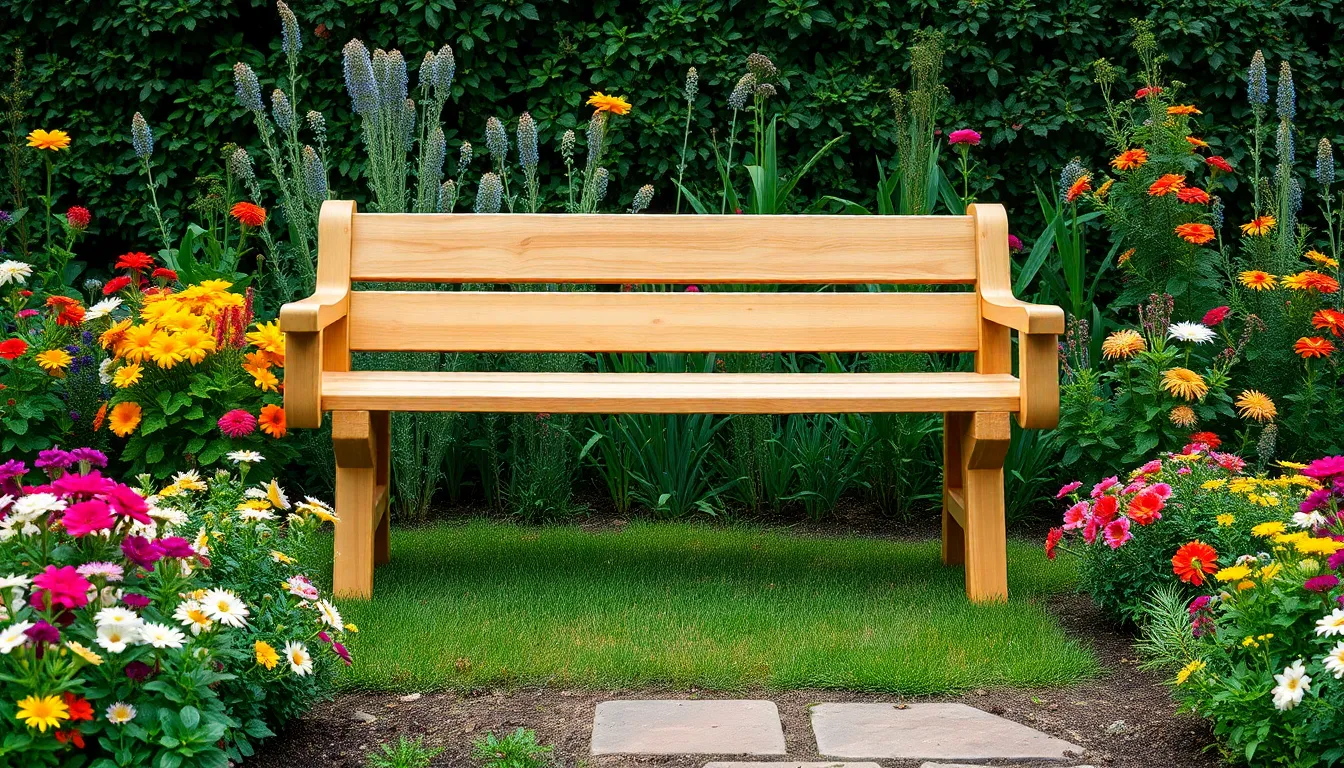Physical Address
304 North Cardinal St.
Dorchester Center, MA 02124

Imagine this: a sunny afternoon, the gentle buzz of bees, and the earthy scent of fresh soil. Now picture yourself comfortably perched on an outdoor gardening bench, tools within reach, ready to transform your garden into a blooming paradise. This isn’t just any bench; it’s your new best friend in the world of gardening.
An outdoor gardening bench enhances the gardening experience with numerous advantages. Gardeners enjoy increased functionality and ease during their time spent in the garden.
Comfort plays a crucial role in any gardening activity. An outdoor gardening bench provides a designated spot for taking breaks while tending to plants. Portable benches allow for flexibility in positioning them where needed most. Relaxing on the bench helps reduce strain on the back and knees, promoting longer gardening sessions. Stools or benches equipped with padding add extra comfort. Sitting helps one focus on tasks, fostering a more enjoyable gardening environment.
Organization significantly impacts gardening efficiency. Outdoor benches equipped with built-in storage compartments eliminate clutter and keep tools easily accessible. Placing pots, gloves, and soil on the bench saves time during planting. Benches with shelving or hooks allow for additional storage options. This arrangement keeps essential items organized, minimizing the chance of losing tools among plants. Utilizing an outdoor gardening bench streamlines the gardening process, enabling a smoother workflow.

Selecting the perfect outdoor gardening bench involves evaluating several key factors to ensure it meets specific needs.
Wood, metal, and plastic represent common materials for outdoor gardening benches. Cedar and teak offer natural beauty and resistance to weather elements; however, they require regular maintenance. Metal benches provide durability and modern aesthetics; rust-resistant options extend their lifespan. Plastic benches are lightweight and easy to move; they resist fading and require minimal upkeep. Each material has its unique advantages, so choosing based on durability, maintenance, and aesthetic appeal is essential.
Bench size and dimensions significantly affect comfort and functionality. Standard benches range between 4 to 6 feet in length. A bench width of 18 to 24 inches offers ample seating space. Height also matters, with most benches standing around 18 to 20 inches for comfortable seating. Consider the available space in the garden and its overall design. Ensuring the bench fits harmoniously within the garden enhances both usability and aesthetic appeal.
Creating a DIY outdoor gardening bench enhances both utility and charm in any garden space. Many options cater to various skill levels and aesthetic preferences, allowing gardeners to express creativity while enjoying their gardening pursuits.
Building a simple outdoor gardening bench requires minimal tools and skills. A basic design includes utilizing untreated cedar planks for durability and appeal. DIYers can construct a straightforward rectangular bench by cutting two long pieces for the seat and four shorter pieces for the legs. Joining these pieces with wood screws ensures stability. Painting or staining the bench adds a personal touch. Additional features, such as a storage shelf beneath the seat, provide functionality, making it easy to access tools while gardening.
Experienced gardeners seeking a challenge can explore more intricate outdoor gardening bench designs. Incorporating modular elements transforms a static bench into a versatile potting station. Using reclaimed wood or metal for structure adds a unique character to the project. Advanced techniques might include integrating trellises for climbing plants or designing benches with built-in storage that offers both organization and style. Incorporating planters into the bench design creates a cohesive look in landscaping. Combining creativity and craftsmanship can result in a stunning centerpiece for any garden.
Maintaining an outdoor gardening bench ensures longevity and enhances its appearance. Regular care keeps it functional and inviting for gardening sessions.
Cleaning an outdoor gardening bench involves simple steps for effective maintenance. Start by removing any loose dirt or debris using a soft brush or cloth. Use mild soap and warm water to scrub the surface, particularly in areas that accumulate grime. Rinse thoroughly to eliminate soap residue and prevent dullness. It’s important to dry the bench with a clean cloth to prevent moisture damage. For wooden benches, apply a wood-friendly cleaner to remove stains and prevent mold. Clean benches regularly to maintain their charm and functionality.
Preserving the material of an outdoor gardening bench is crucial for durability. Apply a protective sealant to wooden benches every one to two years, enhancing resistance to moisture and UV damage. Use rust-resistant paint for metal benches to prevent corrosion and maintain aesthetics. Plastic benches benefit from occasional cleaning to prevent discoloration and fading. Enhance longevity by positioning benches away from harsh weather or direct sunlight, minimizing exposure. These steps protect materials, ensuring the bench remains a centerpiece in the garden for many seasons.
An outdoor gardening bench is more than just a piece of furniture; it’s a vital component of any garden space. By providing comfort and convenience, it transforms the gardening experience into a more enjoyable and efficient activity. With various materials and designs available, gardeners can choose a bench that not only fits their needs but also complements their garden’s aesthetic.
Whether opting for a DIY project or purchasing a ready-made bench, the right choice can enhance both functionality and style. Regular maintenance ensures longevity, allowing the bench to serve as a cherished spot for relaxation and creativity. Ultimately, an outdoor gardening bench can elevate any garden into a personal sanctuary, making every gardening session a delightful retreat.